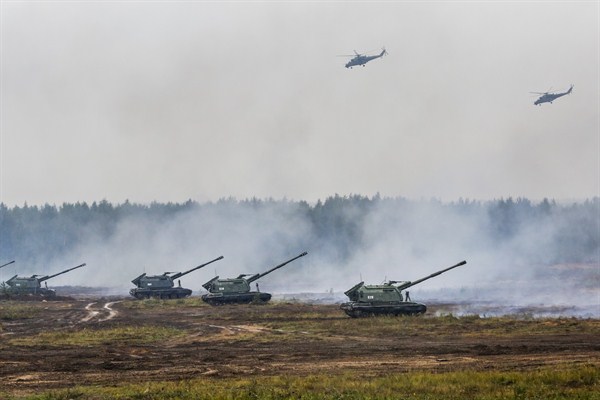Russia kicked off much-anticipated military exercises this week involving either 12,700 troops—the upper limit to avoid a treaty-required NATO observation mission—or more than 100,000, depending on whether you believe the Kremlin or NATO officials. The live-fire Zapad 2017, or West 2017, exercises, conducted jointly with Belarus, portray a conflict with unidentified Western forces in a scenario that, again, is either a defensive operation or an invasion, depending on who you believe.
In either case, despite an almost deadly missile misfire, the drills are being rightly billed as a showcase for Russia’s decade-long military modernization initiative. Launched following the disappointing performance by Russian units in the 2008 Russia-Georgia conflict, the modernization focused on upgrading big-ticket weapons systems, but also on professionalizing the Russian armed forces, streamlining the officer corps, improving command-and-control systems, and tightening training and readiness, with a particular emphasis on combined arms maneuvers. This week’s exercises fit into the latter category, and are a way to put all the other elements to the test.
In some ways, the exercises are no longer necessary as a showcase. Since 2014, Russia’s military intervention in Syria has already highlighted the advances made since 2008. Moscow has outperformed the expectations of many skeptical observers with its air campaign and advise-and-support mission in Syria, while unveiling new capabilities, like standoff cruise missile strikes, for the first time in a conflict zone.

